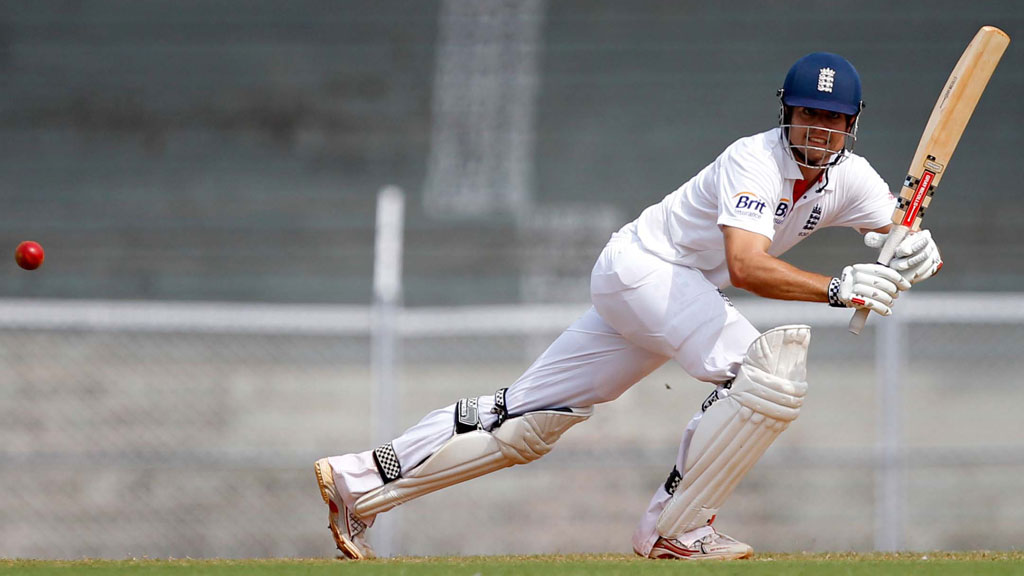India beaten – now for the Aussies
After their celebrated victory in India, Malcolm Boughen asks if England’s cricketers can repeat their success against the Australians at the Ashes next summer.

When England last won a series in India, Alastair Cook was just a few weeks’ old.
That 1985 victory for David Gower’s team was, in fact, the third for England in the sub-continent within eight years, but since then the tourists have always returned empty-handed.
So are this winter’s efforts an indication of an Indian team in decline, England on the rise – or both?
There is undoubtedly a debate to be had over whether the demands of the lucrative Indian Premier League (IPL) have damaged the outlook and fortunes of the Indian test team.
Will England’s notoriously fragile middle order stand up to the kind of pressure only the Aussies can create? And is England’s bowling attack really as strong as it looked against India?
Too many batsmen, perhaps, sacrifice their wickets in the quest for an unnecessarily fast scoring rate, while the bowlers are used to short, sharp spells against batsmen looking for runs and perhaps lack the guile and persistence to work for their successes in the longer form of the game.
It is certainly true that England’s spinners – Monty Panesar and Graham Swann – have shown themselves better at using the traditional slow-turning Indian pitches than the home side’s bowlers.
But has that anything to do with the IPL? Limited overs games these days can often be won by skilful use of slower bowlers who can be harder to hit than the seamers.
So, for once, England had a better spin attack than India. Had Panesar been selected for the first test in Ahmedabad, it is quite conceivable that the result there could have been different.
A brilliant 206 not out by Cheteshwar Pujara gave India an early psychological advantage and England never quite got themselves into the game. But Alastair Cook’s second innings 176 laid down a marker for what was to come in the remainder of the series.
Astonishing batting
Cook’s astonishing batting throughout has been the other key difference between the two sides. As it has begun to seem as if the glittering career of India’s talisman, Sachin Tendulkar, may be drawing to a close, Cook has gone from strength to strength.
But for two questionable decisions in the final test, he could well have finished with a century in every match, such is the rich vein of form the captain is in at the moment.
And when India finally did manage to get him cheaply twice in Nagpur, Jonathan Trott and Ian Bell were there to steer England home to safety and a tour win.
So, having gained – and so quickly lost – their place as the world’s top test nation, could England be coming back to full strength just in time for next summer’s Ashes series?
It all went wrong earlier this year when, in the midst of the Kevin Pietersen texting row, England lost at home to South Africa. That defeat, following on from the three-nil loss in Pakistan last winter, led to the resignation of Andrew Strauss as captain and the opportunity for Cook to step into his shoes.
Since then we’ve seen Pietersen return to the fold, with some impressive performances in India. So if Nick Compton can make the opener spot alongside Cook his own, with Trott, Bell and Pietersen completing the top five and players like Joe Root, Jonny Bairstow and Eoin Morgan knocking at the door, the batting line-up looks pretty strong.
Matt Prior and Craig Kieswetter are keepers who can both bat. We know about the spinners and the fast bowling line-up of Jimmy Anderson, Stuart Broad, Steve Finn, Tim Bresnan and Graham Onions are all impressive on their day and on English wickets.
Looking rosy?
Australia, having lost in South Africa, have slipped below England to third in the world test rankings so things perhaps are looking rosy. Except …
Anyone who has followed the history of the Ashes down the years would know better than to count their chickens.
Can Cook continue to be both a successful captain and England’s best batsman? It is not a trick many have been able to pull off for long. The mood music with Kevin Pietersen back in the fold may be positive at the moment, but will it last?
Will England’s notoriously fragile middle order stand up to the kind of pressure only the Aussies can create? And is England’s bowling attack really as strong as it looked against India?
Those questions – and many others – will have to be faced and answered before we can be sure of a new golden age for English cricket, but this winter’s tour has certainly set up next summer’s Ashes to be as intriguing as ever.